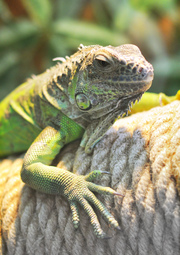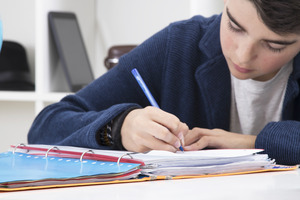Citizen Science Goes Mobile: Empowering Kids Through Tech-Driven Conservation Apps | Animal Protection Education
The future of environmental conservation hinges not only on scientific research but also on public participation and awareness. Fortunately, technology is bridging the gap, offering innovative ways to engage the next generation in conservation efforts.
As we explore the rise of mobile apps designed for citizen science projects, we learn how they empower kids to actively collect real-world data for animal conservation.
Beyond the Classroom: Citizen Science in the Digital Age
Citizen science projects have a long history of engaging the public in scientific research. Traditionally, participation involved activities like birdwatching, collecting plant samples, or recording weather data. However, smartphones and mobile technology have revolutionized citizen science, making it more accessible and engaging, especially for children.
- Democratizing Data Collection: Mobile apps remove geographical barriers and complex equipment requirements, allowing anyone with a smartphone to contribute to scientific research. This empowers kids to become citizen scientists, participating in data collection efforts from their backyards or local parks.
- Gamification for Good: Many citizen science apps incorporate game mechanics to make data collection a thrilling adventure for children. Imagine earning points for identifying different bird species or completing challenges related to monitoring local water quality. This fun and engaging approach fosters a sense of competition and accomplishment, igniting a spark of excitement and motivation in kids to actively participate in conservation efforts.
- Real-World Impact: The data collected through these apps isn’t just for show. It’s used in vital research projects. Kids can feel a profound sense of achievement, knowing their observations are used by scientists to track animal populations, monitor environmental changes, and inform conservation strategies. This sense of accomplishment can inspire a lifelong passion for environmental stewardship.
Apps in Action: Examples of Mobile Citizen Science for Kids
There’s a wealth of mobile apps designed for citizen science projects, catering to a variety of interests and age groups. iNaturalist allows users to document a wide range of wildlife, from birds and butterflies to plants and fungi.
Kids can take pictures and the app uses image recognition and a community of experts to help with identification. The collected data contributes to a global biodiversity database used by scientists for research and conservation efforts.
CoCoRaHS focuses on weather observation, essential for monitoring climate change’s impact on wildlife habitats. Kids can use their smartphones to measure precipitation and record weather data, contributing valuable information to a national network. The app offers educational resources specifically designed for them, fostering an understanding of weather patterns and their connection to animal conservation.
Finally, SciStarter acts as a hub, connecting users with a vast array of citizen science projects across various disciplines, including animal conservation. Kids can browse projects based on their location and interests, whether it’s tracking butterfly migrations, monitoring local water quality, or recording amphibian calls. SciStarter provides resources and instructions for each project, ensuring a smooth and engaging citizen science experience.
Engaging Activities and Learning Opportunities
These conservation science apps offer more than just data collection; they unlock a treasure trove of engaging activities and learning opportunities. Imagine transforming a simple nature walk into a scientific expedition.
Equipped with a citizen science app, kids can identify plant species, track insect populations, or monitor the health of local trees. These activities spark curiosity about the natural world and instill a sense of responsibility for its well-being. Furthermore, by identifying and documenting different animal species, children build a deeper connection with local wildlife, fostering appreciation for their existence and the importance of protecting their habitats.
Education opportunities can include teaching kids environmental awareness and the importance of choosing eco-friendly and vegan products that do not exploit animals. This feeds into the broader issue of responsible consumerism.
Many apps also provide information about animal behavior, diet, and conservation threats, fostering empathy and understanding for the creatures they encounter. Finally, some apps offer features that connect them with a global community of citizen scientists. Kids can see how their data contributes to a larger project and interact with others who are passionate about conservation. This fosters a sense of community and belonging, motivating them to continue their involvement in protecting wildlife.
Why Animal Protection Education Matters
Animal protection education goes beyond simply teaching children about different animal species. It aims to cultivate a sense of empathy, responsibility, and respect for all living creatures. Here’s why incorporating animal protection education into a child’s life is crucial:
Fostering Empathy and Compassion
By learning about the unique behaviors, needs, and vulnerabilities of animals, children develop empathy and compassion for creatures different from themselves. This understanding can translate into responsible actions towards pets, wildlife encounters, and even dietary choices.
Building a Sense of Responsibility
Animal protection education teaches children about the threats animals face, including habitat loss, pollution, and human actions. By understanding these challenges, children can develop a sense of responsibility for the well-being of animals and the environment they share.
Promoting Responsible Pet Ownership
Many children dream of having a pet. Animal protection education equips them with the knowledge and skills necessary for responsible pet ownership. Learning about proper care, training, and ethical treatment of animals lays the foundation for a lifelong bond and minimizes the risk of pet neglect or abandonment.
Inspiring Future Conservationists
Early exposure to animal protection issues can spark a lifelong passion for conservation in children. By learning about successful conservation efforts and the positive impact humans can have, children are empowered to become advocates for animal welfare and environmental stewardship.
Animal protection education doesn’t require elaborate field trips or expensive resources. Simple acts like discussing responsible pet care, reading stories about endangered species, or visiting a local animal shelter can all plant the seeds of compassion and inspire a new generation of animal protectors.
Empowering the Next Generation of Conservationists
Mobile citizen science apps offer a powerful tool for engaging children in animal conservation efforts. By turning them into active participants in data collection, these apps foster a sense of purpose, build connections with the natural world, and inspire a passion for environmental stewardship. With the knowledge gained through these apps and the opportunity to contribute to real-world research, children become empowered to become the next generation of conservationists, working towards a future where humans and wildlife can thrive in harmony.
Parents and educators are responsible for introducing children to these mobile tools and encouraging participation in citizen science projects. We can cultivate a generation of environmentally conscious individuals by fostering a love for nature, empowering children with the tools to participate in citizen science, and encouraging them to take action. These future leaders will be equipped with the knowledge and passion necessary to address the challenges facing our planet and ensure a sustainable future for all its human and animal inhabitants.






